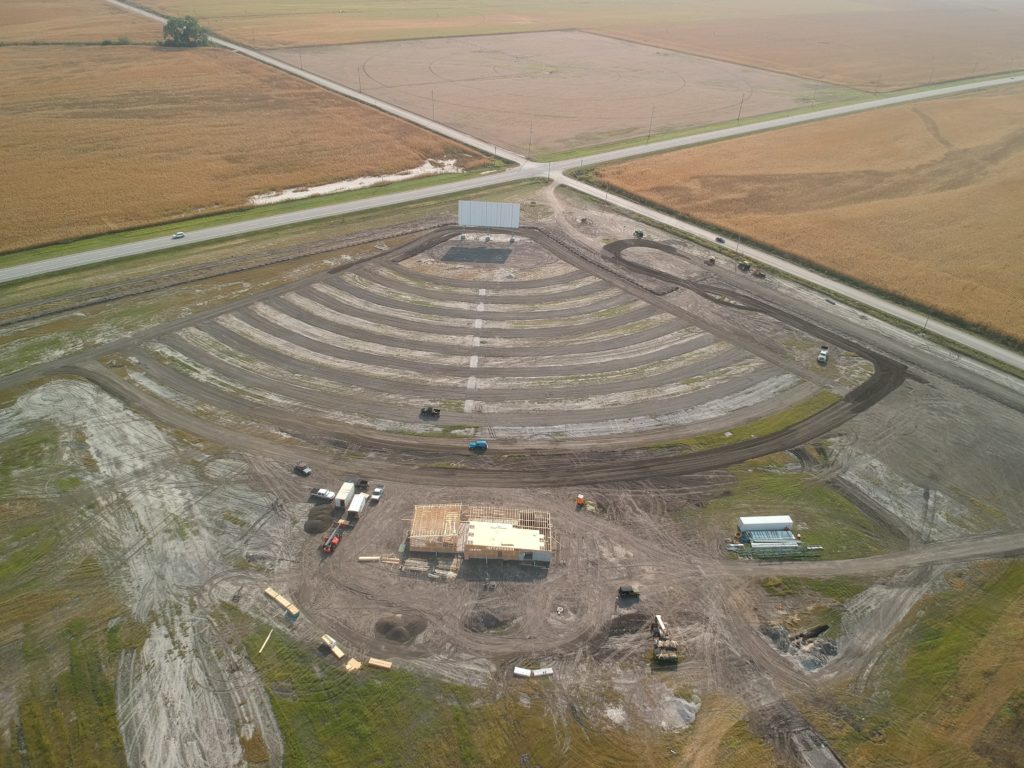

Schoeber and Maarten Merkx, 15 March 2023, ACS Central Science.

Reference: “Glow-in-the-Dark Infectious Disease Diagnostics Using CRISPR-Cas9-Based Split Luciferase Complementation” by Harmen J. The researchers say that the LUNAS assay has great potential for detecting many other viruses effectively and easily. We didnt find anything nearby, but heres whats happening in other.

This is a brand new, built from the ground up drive-in that was just opened in May of 2021 after several years of planning, delays and then construction. 13427 North 300th Street, Valley, Valley, 68064, USA.
#Quasar drive in movie#
When tested on clinical samples collected from nasal swabs, RPA-LUNAS successfully detected SARS-CoV-2 RNA within 20 minutes, even at concentrations as low as 200 copies per microliter. The Quasar Drive-in is a single screen drive-in movie theater located in Valley, NE which is just outside of Omaha, Nebraska. It is pronounced / k w e z r / KWAY-zar, and sometimes known as a quasi-stellar object, abbreviated QSO.This emission from an AGN is powered by a supermassive black hole with a mass ranging from millions to tens of billions of solar masses, surrounded by a gaseous accretion disk. A tube that changed from green to blue indicated a positive result. A quasar is an extremely luminous active galactic nucleus (AGN). To account for this substrate being used up, the researchers used a control reaction that shined green. If a specific viral genome that the researchers were testing for was present, the two CRISPR/Cas9 proteins would bind to the targeted nucleic acid sequences and come close to each other, allowing the complete luciferase protein to form and shine blue light in the presence of a chemical substrate. With the new technique, called LUNAS (luminescent nucleic acid sensor), two CRISPR/Cas9 proteins specific for different neighboring parts of a viral genome each have a distinct fragment of luciferase attached to them. To make sure there was enough sample RNA or DNA to analyze, the researchers performed recombinase polymerase amplification (RPA), a simple method that works at a constant temperature of about 100 F. So, Maarten Merkx and colleagues wanted to use CRISPR-related proteins, but combine them with a bioluminescence technique whose signal could be detected with just a digital camera. The gene-editing technique known as CRISPR could provide this ability, but it requires many steps and additional specialized equipment to detect what can be a low signal in a complex, noisy sample. However, until now, these sensors have not achieved the exceptional sensitivity necessary for clinical diagnostic tests. This luminescent protein has been integrated into sensors that emit visible light when detecting their target, making them ideal for straightforward point-of-care testing. However, in the journal ACS Central Science, researchers have now revealed a novel, sensitive technique that can analyze viral nucleic acids in just 20 minutes using a one-step process with “glow-in-the-dark” proteins.īioluminescence, the scientific phenomenon behind the firefly’s glow, the anglerfish’s radiant lure, and the ghostly blue of phytoplankton-laden shores, is powered by a chemical reaction involving the luciferase protein. Credit: Maarten MerkxĪlthough there have been significant advancements in diagnostic tests for viral diseases, many highly sensitive tests still rely on complex sample preparation and result interpretation methods, rendering them unsuitable for point-of-care settings or resource-limited areas. It does not store any personal data.Proteins that glow bright blue or green, as pictured here, could make disease diagnosis quicker and easier. The cookie is set by the GDPR Cookie Consent plugin and is used to store whether or not user has consented to the use of cookies. The cookie is used to store the user consent for the cookies in the category "Performance". This cookie is set by GDPR Cookie Consent plugin. The cookie is used to store the user consent for the cookies in the category "Other. The cookies is used to store the user consent for the cookies in the category "Necessary". The cookie is set by GDPR cookie consent to record the user consent for the cookies in the category "Functional". The cookie is used to store the user consent for the cookies in the category "Analytics".

These cookies ensure basic functionalities and security features of the website, anonymously. Necessary cookies are absolutely essential for the website to function properly.


 0 kommentar(er)
0 kommentar(er)
